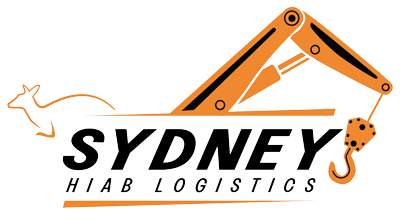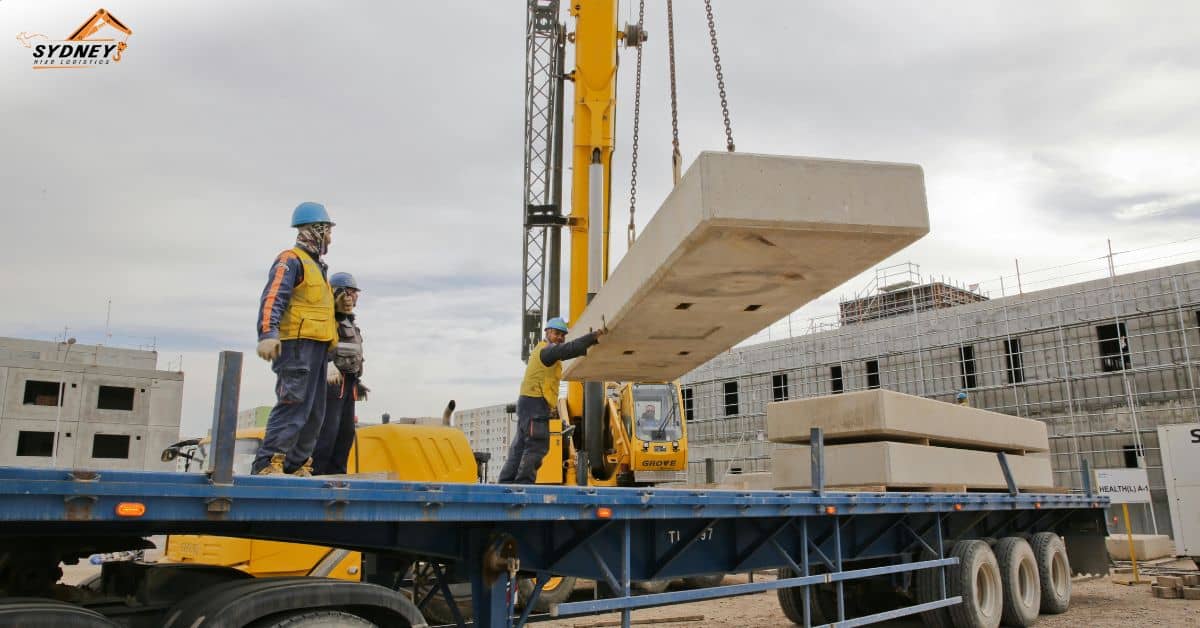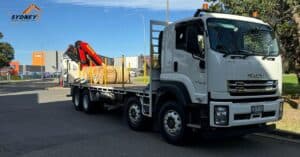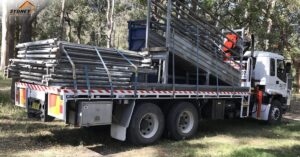Sydney, a city known for its amazing architecture, thriving business, and constant expansion, is a city that thrives on productivity and creativity. Because it provides a special blend of lifting ability, unmatched mobility, and surgical precision, mobile crane rental has become an essential solution for many industries in this dynamic climate. Mobile cranes are essential to forming the city’s landscape, whether it is through complex infrastructure projects or tall skyscrapers.
No matter the size or complexity of your upcoming project, this in-depth article will explore the strong arguments for why hiring a mobile crane in Sydney is a wise and beneficial choice.
The Versatility of Mobile Cranes
One characteristic that sets mobile cranes apart is their innate mobility. These cranes, in contrast to their stationary counterparts, are mounted on wheeled or tracked carriers, which allows them to move freely about job sites and in tight places. This built-in mobility is revolutionary, particularly given Sydney’s frequently crowded urban setting. From small truck-mounted cranes perfect for inner-city operations to enormous all-terrain cranes designed to manage the most difficult lifts on difficult terrains, the range of mobile cranes is extensive. This flexibility guarantees that there is a mobile crane solution that is precisely suited to the particular needs of each project.
Advantages of Mobile Crane Hire in Sydney
Choosing mobile crane hire in Sydney unlocks a wealth of benefits, transforming project execution and delivering significant advantages:
- Unmatched Mobility and Accessibility: The flexibility of mobile cranes to be quickly deployed and easily adjusted on site is one of their biggest benefits. They are particularly well-suited for projects in crowded urban areas or locations with restricted access due to their road-legal status and ability to manoeuvre in confined spaces. This saves crucial project time and resources by doing away with the requirement for the complicated and drawn-out setup processes that are frequently connected to static cranes.
- Cost-Effectiveness and Budgetary Control: Compared to other lifting options, using a mobile crane is frequently more affordable, especially for shorter-term tasks. You save the large initial investment needed to buy a crane as well as the continuing costs of upkeep, storage, insurance, and depreciation. Mobile crane rental is a cost-effective and environmentally conscious choice because you only have to pay for the crane when you need it, for the precise amount of time you need it.
- Rapid Deployment and Enhanced Time Efficiency: With its exceptional speed of setup and operation, mobile cranes may greatly reduce downtime and increase on-site production. Because of their innate mobility, they can move quickly and effectively between various lifting sites, which speeds up project completion times even further. For projects with short turnaround times or deadline pressure, this quick deployment feature can be vital.
- Leveraging Expertise and Ensuring Safety: Teams of highly qualified, well-trained, and certified crane operators are employed by reputable mobile crane rental firms in Sydney. From simple lifts to intricate and difficult operations, these professionals have the knowledge and experience to manage a wide variety of lifting scenarios. They greatly reduce the chance of accidents and guarantee a safe working environment by doing in-depth site assessments, carefully organising each lift, and operating the crane with accuracy and safety.
- Unparalleled Flexibility and Adaptability: To perfectly meet the various needs of various projects, mobile cranes can be easily outfitted with a large variety of specialised attachments and lifting equipment. Whether your project calls for the exact positioning of delicate equipment, the lifting of bulky building materials, or access to otherwise inaccessible locations, there is a mobile crane solution made to fit your needs.
- Minimising Site Disruption and Optimising Space Utilisation: In general, mobile cranes need less space to put up than other kinds of cranes, which helps to keep precious space on site and reduce disturbance to the community. Further maximising project efficiency and resource allocation, their agility also lessens the need for time-consuming and expensive site preparation.
- Accessing Specialised Equipment and Expertise: Reputable crane rental businesses frequently keep a varied and well-maintained fleet of mobile cranes, including specialty versions intended for certain lifting jobs. This gives you access to the exact machinery you need for your project without having to pay for specialist cranes that you might use only sometimes.
- Ensuring Compliance and Managing Insurance Coverage: Reputable crane rental businesses assume full responsibility for making sure their machinery is thoroughly maintained, inspected on a regular basis, and complies with all applicable safety standards, laws, and licensing requirements. Additionally, they keep comprehensive insurance coverage, which shields you from possible liability in the event of unanticipated damage or accidents.
- Championing Environmental Responsibility: Compared to older types, modern mobile cranes are designed to use less fuel and emit less emissions. This is in line with sustainable construction methods and helps to lessen the project’s environmental impact.
Beneficiaries from Mobile Crane Hire in Sydney
A wide spectrum of industries and projects across Sydney can benefit significantly from the advantages of mobile crane hire, including:
- Construction and Development: Lifting large building materials including precast panels, steel beams, and concrete slabs; setting up HVAC units, generators, and chillers on roofs or in other difficult-to-reach places; and assisting with a variety of construction tasks.
- Infrastructure Projects: Building roads, bridges, tunnels, and other vital infrastructure; setting up and maintaining telecommunication towers, electricity lines, and other vital utility infrastructure.
- Telecommunications and Technology: Building and maintaining cell towers, setting up satellite dishes and antennas, and moving machinery for network expansions and upgrades.
- Logistics, Transport, and Warehousing: Transporting heavy machinery, equipment, and containers; optimising warehouse operations; and loading and unloading cargo at ports, rail yards, and distribution hubs.
- Manufacturing and Industrial Operations: Optimising material handling; installing and maintaining massive machinery and industrial equipment; and lifting and transporting heavy components during the manufacturing process.
- Events, Entertainment, and Film Production: Assembling sound systems, lighting rigs, stages, and other gear for large-scale events including festivals, movies, and concerts.
- Signage, Advertising, and Marketing: Installing and maintaining outdoor advertising displays, such as billboards and posters, which frequently call for access to difficult-to-reach places.
- Emergency Services and Disaster Relief: Supporting rescue efforts, moving fallen objects and debris, and helping in other emergency circumstances.
Considerations while Hiring Right Mobile Crane Hire Partner in Sydney
Selecting the right mobile crane hire company is paramount for the success of your project. Consider the following crucial factors:
- Experience, Reputation, and Industry Standing: Choose a business that has a solid track record of delivering dependable service, well-maintained machinery, and a dedication to client pleasure. Check for pertinent industry accreditations, look at online reviews, and ask other companies in your sector for advice.
- Crane Fleet Diversity, Capacity, and Condition: Make sure the business has a modern, varied fleet of mobile cranes that can handle your unique lifting needs. Examine the available cranes’ lifting capability, reach, and other technical details carefully. To make sure the cranes are in top functioning shape, find out how old they are and what maintenance plans they follow.
- Operator Qualifications, Certification, and Expertise: Ascertain that the company uses trained and highly skilled crane operators who have received extensive instruction in load control, emergency protocols, and safe lifting techniques.
- Safety Record, Compliance, and Regulatory Adherence: Examine the business’s safety record in detail and make sure that all applicable safety laws, industry standards, and licensing requirements are met.
- Transparent Pricing, Contract Clarity, and Payment Terms: Get precise, comprehensive, and open price information up front, including any possible extra fees for fuel, permits, insurance, mobilisation, or specialty attachments. Before signing, carefully go over the terms and conditions of the contract, giving particular attention to the rental period, liability clauses, payment schedules, and cancellation policies.
- Availability, Scheduling Flexibility, and Responsiveness: Verify the company’s availability and make sure they can deliver the crane when you need it, particularly for urgent assignments. Talk in-depth about scheduling and mobilisation plans and evaluate how quickly they respond to your questions.
- Insurance Coverage, Liability, and Risk Management: Make sure the business has enough insurance to shield you from possible liability in the event of mishaps, property damage, or other unanticipated events.
- Customer Service, Communication, and Support: Select a firm whose customer service representatives are available to answer your concerns, offer professional advice, and provide support during the rental process. They should be prompt, helpful, and educated.
Planning Your Mobile Crane Lift for Optimal Success
Meticulous planning is essential for a safe, efficient, and successful mobile crane lift. Consider the following key factors:
- Thorough Site Assessment and Evaluation: Examine the site thoroughly, considering the ground stability, access points, buildings, trees, and power lines, as well as any other pertinent environmental elements and the site’s closeness to subterranean utilities.
- Detailed Lift Planning and Engineering Review: Create a thorough lift plan that includes the lifting process, the location of the crane, the load weight calculations, the rigging needs, and other important details. Consider hiring a certified lift engineer to examine and approve the plan for complicated lifts.
- Securing Permits, Approvals, and Regulatory Compliance: Before starting the lift, get all required permits and clearances from utility providers, municipal authorities, and other pertinent organisations. Assure complete adherence to all relevant laws and industry norms.
- Effective Communication, Coordination, and Teamwork: Create open and transparent lines of communication between the site supervisors, riggers, signal people, crane operator, and other lift participants. Throughout the lifting process, make sure there is smooth synchronisation and teamwork.
- Implementing Robust Safety Measures and Protocols: Establish thorough safety procedures and measures on the property, such as traffic control, barricades, warning signs, exclusion zones, and personal protection equipment (PPE) for all workers engaged in or close to the lifting operation. To promote safe work practices, hold frequent toolbox discussions and safety briefings.
- Load Weight Verification and Centre of Gravity Determination: Determine the weight and centre of gravity of the load to be lifted precisely. To ensure a safe and balanced lift, this information is essential for choosing the right crane and rigging equipment.
- Crane Placement and Ground Conditions: Make sure the ground is firm and able to sustain the weight of the crane and the load when choosing where to position it. When required, employ outriggers or other stabilising techniques.
- Rigging and Lifting Accessories: Depending on the weight and shape of the cargo, select the proper rigging tools and lifting accessories, such as slings, shackles, hooks, and spreader beams. Make certain that every piece of rigging equipment has been examined and approved.
- Weather Conditions and Environmental Factors: Keep an eye on the weather and environmental elements that can impact the lifting operation’s safety, such as wind speed, precipitation, and visibility. If the weather is not favorable, postpone the lift.
- Emergency Preparedness and Response Plan: Create a plan for emergency readiness and reaction in case of mishaps, broken equipment, or other unanticipated circumstances. Make certain that every employee understands the plan and their responsibilities within it.
Conclusion
Mobile crane rentals offer a clever, adaptable, and affordable option for a variety of lifting needs. You can guarantee a successful, safe, and efficient outcome for your next project by carefully planning your lift and working with a reliable and experienced crane rental business. The power, accuracy, and versatility that mobile crane hire provides will enable you to succeed in Sydney’s dynamic environment, regardless of your industry—construction, infrastructure development, or any other that requires heavy lifting. Hiring a mobile crane is a way to take your project to new heights of success, not merely to lift things.




